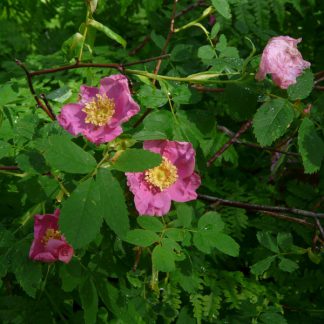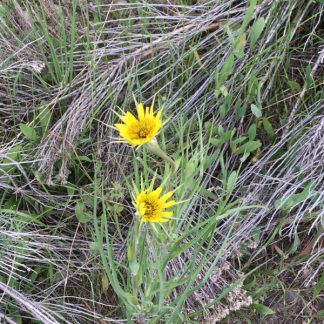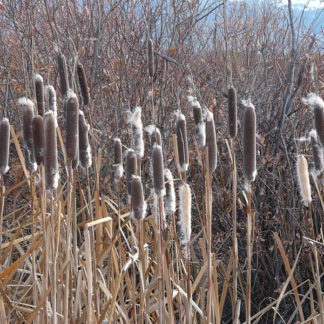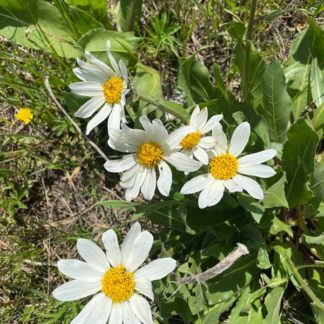highly visible
Showing 61–69 of 69 results
-

Rosa spp. / wild rose
- deep red (to pink) flowers; wonderfully fragrant
- understory shrub in wetter areas
- flowers mid-summer
-

Senecio integerrimus / tall western groundsel
- early spring to early summer, often with larkspur
- bright yellow flower head with several, disheveled looking blossoms
- only 5-13 ray florets (petals)
- cobwebby hairy basal leaves, especially when young
- seasonally moist areas, from sagebrush to higher parts of the fen
-

Senecio triangularis / arrowleaf ragwort
- leafy stems with arrow-shaped, coarse-toothed leaves
- often in large patches on moist soil
- clusters of yellow flower heads, each with 8-ish untidy ray florets
- numerous green involucral bracts, sometimes with black tips
- largest leaves occur mid-stem
-

Solidago canadensis / goldenrod
- large sprays of yellow flowers in late summer and fall
- often tall and in large colonies
- lance-shaped, toothed leaves
- mostly (but not always) in disturbed areas
-

Tragopogon spp. / salsify
- large yellow inflorescence with pointy sepals extending past the "flower"
- grass-like leaves
- non-native, weed
- widespread
-

Typha latifolia / cattail
- tall, grass-like with thick, long, flat leaves
- in wet areas, especially streams and stream banks
- inflorescence club-like spike; yellow (male) above, green (female) below
- seed head dark brown club, with bare spike above
- fruits (seeds) white & fluffy, released in late summer, autumn, winter
-

Veratrum californicum / California false hellebore
- huge inflorescence covered with one-inch-plus flowers
- six white tepals with green centers
- moist areas, possibly very dense stands
- foot-long, heavily veined, pleated bright green leaves
-

Verbascum thapsus / mullein
- rosette of large, soft, hairy leaves
- small yellow flowers densely packed on a very tall spike
- persistent ugly brown spike after flowering is done
- often on otherwise bare ground
-

Wyethia helianthoides / white mule’s ears
- large, white-rayed flowers - like daisies
- large leaves, reminiscent of mule's ears
- uncommon but in huge profusion when it is found
- in wetlands or wetter meadows and especially in the spring.
Showing 61–69 of 69 results